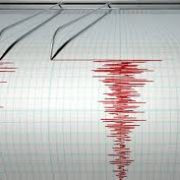NASA Details Earthquake Effects on the Earth
NASA scientists using data from the Indonesian earthquake calculated it affected Earth’s rotation, decreased the length of day, slightly changed the planet’s shape, and shifted the North Pole by centimeters. The earthquake that created the huge tsunami also changed the Earth’s rotation.
Dr. Benjamin Fong Chao, of NASA’s Goddard Space Flight Center, Greenbelt, Md. and Dr. Richard Gross of NASA’s Jet Propulsion Laboratory, Pasadena, Calif. said all earthquakes have some affect on Earth’s rotation. It’s just they are usually barely noticeable.
“Any worldly event that involves the movement of mass affects the Earth’s rotation, from seasonal weather down to driving a car,” Chao said.
Chao and Gross have been routinely calculating earthquakes’ effects in changing the Earth’s rotation in both length-of-day as well as changes in Earth’s gravitational field. They also study changes in polar motion that is shifting the North Pole. The “mean North pole” was shifted by about 2.5 centimeters (1 inch) in the direction of 145º East Longitude. This shift east is continuing a long-term seismic trend identified in previous studies.
They also found the earthquake decreased the length of day by 2.68 microseconds. Physically this is like a spinning skater drawing arms closer to the body resulting in a faster spin. The quake also affected the Earth’s shape. They found Earth’s oblateness (flattening on the top and bulging at the equator) decreased by a small amount. It decreased about one part in 10 billion, continuing the trend of earthquakes making Earth less oblate.
To make a comparison about the mass that was shifted as a result of the earthquake, and how it affected the Earth, Chao compares it to the great Three-Gorge reservoir of China. If filled the gorge would hold 40 cubic kilometers (10 trillion gallons) of water. That shift of mass would increase the length of day by only 0.06 microseconds and make the Earth only very slightly more round in the middle and flat on the top. It would shift the pole position by about two centimeters (0.8 inch).

